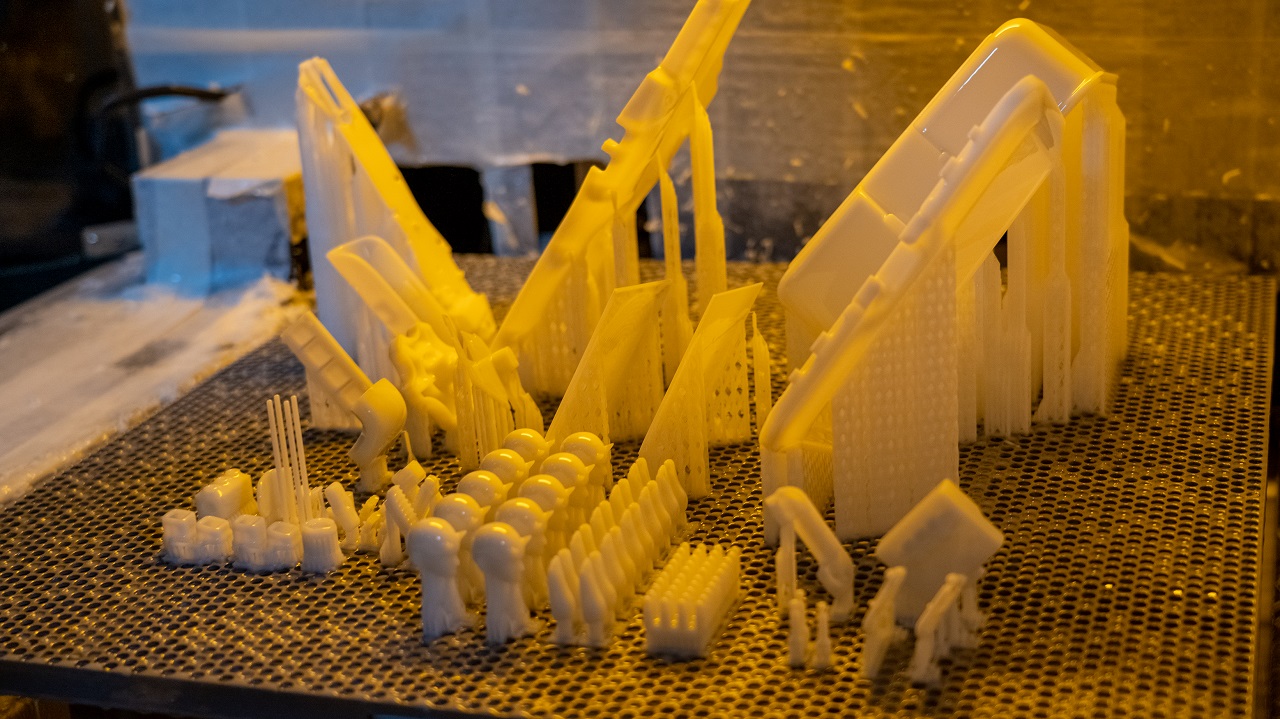3D Printer Resolution Secrets!
Resolution in 3D printing is defined as the smallest feature size that could be reproduced by a printer in the x, y, and z axes. Resolution has important effects on finish and level of detail possible within the 3D parts left printed. Resolution is very important to understand so that just the right 3D printing technology and service are chosen for an application. In this article, we outline the factors determining resolution, explain how resolution affects print quality, and give guidelines for picking a printer or service with the right resolution capabilities for your needs.
What Determines Printer Resolution?
Several factors play a role in determining the resolution of a 3D printer:
- Nozzle/laser diameter – The smallest nozzle or laser beam diameter limits the smallest detail in the x/y plane. Typical nozzle sizes range from 0.2mm to 0.8mm for FDM printers.When determining what size nozzle you should use for 3D printing, considering the type of details you’re aiming to achieve is critical. This decision can significantly impact the quality and precision of your prints. Lasers down to 7 microns can be used in SLA 3D printers.
- Stepper motor increments – Stepper motors move the print head in discrete steps. The smaller the increments, the higher the resolution in x, y and z. 1.8 degree stepper motors with 1/16 microstepping offer higher resolution than standard 1.8 degree motors.
- Layer height – This is the thickness of each printed layer in the z-axis. Typical layer heights range from 50 to 400 microns. Finer layers result in better resolution and surface finish.But more precise calibration may be required to avoid common printing problems. To ensure the best results and manage any issues that may arise, it’s important to understand common 3D printing problems and solutions
- Support material – Some technologies require support material during printing, which limits how small overhangs and channels can be designed.
- Software – The printer software controls parameters like stepper increments and slice height, impacting achievable resolution.
- Post processing – Smoke/vapor polishing and sanding can improve the surface finish of prints beyond what the printer alone can produce.
How Resolution Impacts Print Quality
The interplay between the above factors determines the resolution and minimum feature size possible on a 3D printer. This directly impacts the print quality in a number of ways:
- Detail and tolerances – Higher resolution enables more intricate designs with fine details. Small text, logos, and tolerances of up to a few hundred microns are possible.
- Steps between layers – With low resolution, stair-stepping will be visible on curves and diagonal/angled surfaces. Optimal layer height minimizes the appearance of layer steps.
- Wall thickness – Higher resolution means printers can produce thinner walls and flexible components. Low-resolution printers may struggle with walls below 1-2mm.
- Surface finish – A smooth surface requires high resolution in the z-axis. Low layer heights and fine nozzle diameters result in less visible print layers.
- Accuracy – Dimensional accuracy improves with higher resolution capabilities, especially for small precision parts. Features are positioned more exactly.
- Material options – Some high-resolution technologies like SLA provide a wider range of materials, from polymers to castable resins,allowing for a diverse set of applications. The choice of material not only affects the aesthetic quality but also plays a crucial role in the functional outcome of the print. With the advancements in SLA 3D printing services for 2024, exploring the evolving selection of materials becomes essential for achieving the best surface finish and durability for your project.
Consider a device cover panel with text and logo. A low-resolution printer would struggle, producing a rough surface, boxy letters, and a simplified logo shape. However, on a high-resolution printer, smooth surfaces, sharp lettering, and intricate logo details are possible.
Guidelines for Choosing the Right Print Resolution
So, how do you choose a 3D printing technology and service with sufficient resolution for your application? Follow these guidelines:
- Evaluate required feature sizes – Assess the minimum detail size, wall thicknesses, precision needs, and other specifications that the printer must match. Any features below approximately triple the printer resolution may suffer.
- Understand surface finish needs – Will the part be customer-facing? What post-processing, like sanding, priming, polishing, or coating, will be used? This impacts the required base resolution.
- Consider future application growth – Even if current resolution needs are modest, future iterations may require greater detail. Investing in higher resolution now provides headroom.
- Analyze tradeoffs – With photopolymers, higher resolution comes at the expense of longer print times. With extrusion, print speed typically drops as layer height decreases. Weigh priorities.
- Look beyond resolution – Build volume, materials, accuracy, software functionality, and post-processing options also impact overall part quality. Don’t focus solely on resolution.
The table below provides rough resolution guidelines for common 3D printing technologies:
| 3D Printing Technology | Rough Resolution Guidelines |
|---|---|
| Fused Deposition Modeling (FDM) | 100-300 microns |
| Stereolithography (SLA) | 25-100 microns |
| Digital Light Processing (DLP) | 25-100 microns |
| Selective Laser Sintering (SLS) | 50-200 microns |
| Selective Laser Melting (SLM) / Direct Metal Laser Sintering (DMLS) | 20-100 microns |
| Electron Beam Melting (EBM) | 50-200 microns |
| Binder Jetting | 100-500 microns |
Ready to choose a high-resolution printing service? Reach out to discuss your specific application needs. Our team will help identify the optimal 3D printing technology and post-processing to achieve the finish, detail, and tolerances you require. With a broad range of resolution capabilities, we can deliver even the most intricate designs. Contact us today to get started.





